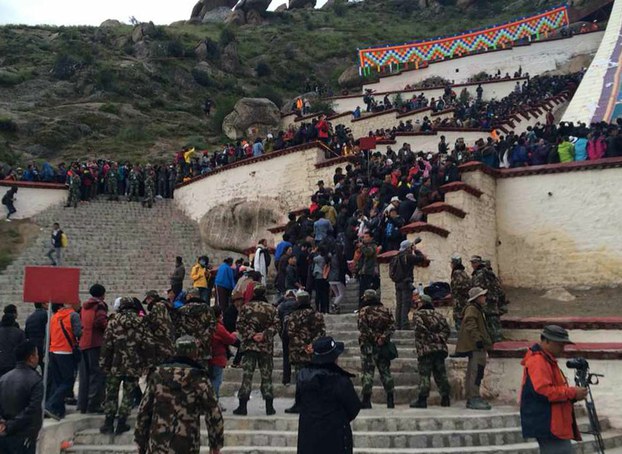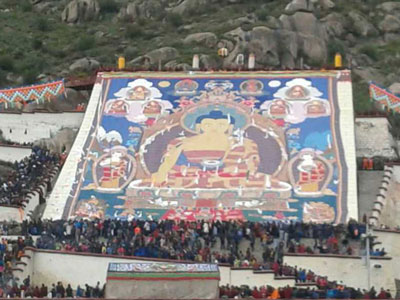Chinese authorities in Tibet’s regional capital Lhasa have stationed large numbers of police and armed security personnel at a huge monastery outside the city during the annual Shoton, or “Yogurt,” festival, according to online sources from the region.
The heavy paramilitary deployment at Drepung monastery follows similarly tightened security measures last year, when authorities set up metal barricades in the monastery courtyard and thoroughly searched Tibetan festival-goers.
Tibetan worshippers view a huge thangka, or scroll painting, at the Yogurt Festival in Lhasa, Aug. 25, 2014. Credit: Photo courtesy of an RFA listener
Photo courtesy of an RFA listener
This year, drones and other aircraft are being used to track the movements of festival crowds, sources said, adding that Chinese security forces are also being seen in larger-than-usual numbers in Lhasa itself, as well as in the nearby major monasteries of Sera and Ganden.
Uniformed security personnel have also been positioned on a hillside behind Drepung specially built to display a large thangka, or religious scroll painting, photos distributed by Tibetan social media reveal.
The Shoton festival began in the 17th century as a religious observance in which lay Tibetans offered yogurt to Buddhist monks who had completed their annual religious retreats, based on a tradition dating back centuries earlier to the time of the Buddha, in India.
This year’s festival—which Chinese officials have themed “Prosperous Family, Happy Lhasa”—will run from Aug. 25 to Sept. 2, and will feature 13 separate exhibitions showcasing traditional dance and cultural performances, photo contests, and displays of religious art.
Reported by RFA’s Tibetan Service. Translated by Dorjee Damdul. Written in English by Richard Finney.





